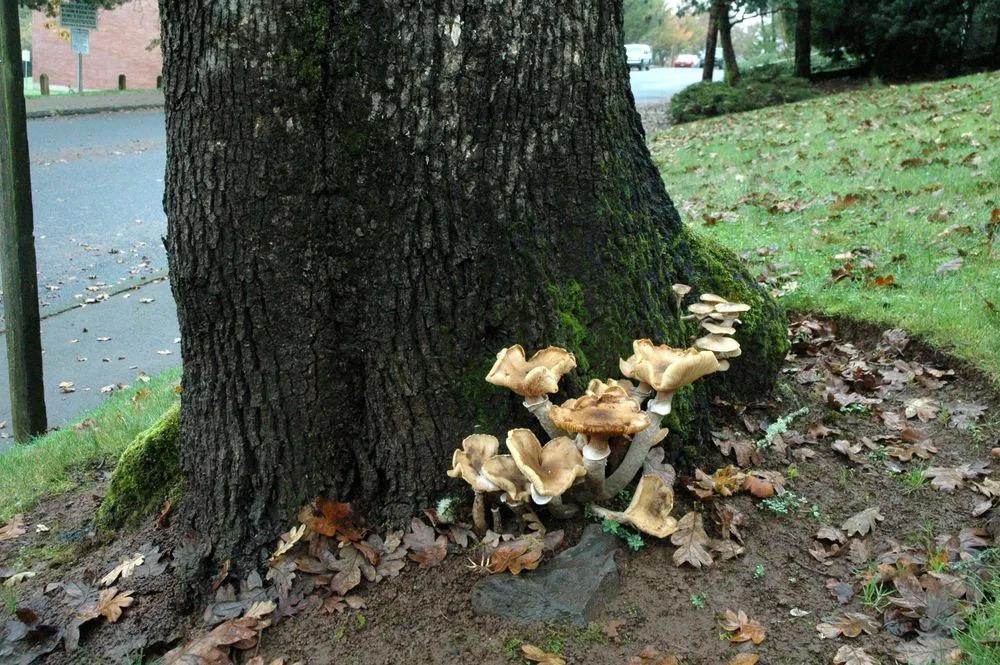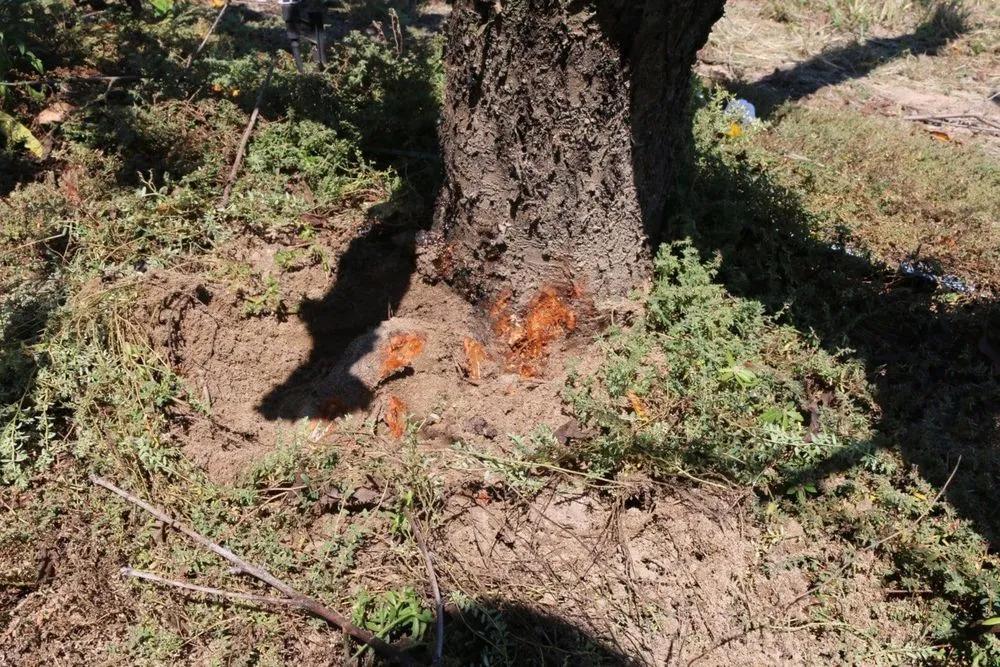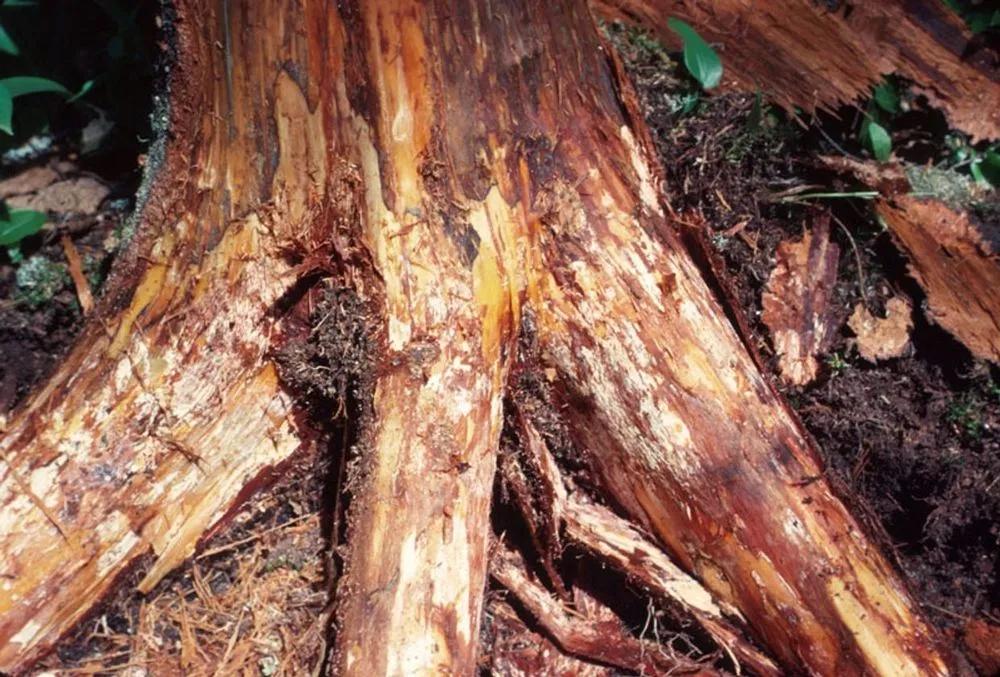Caused by several members of the fungal genus Armillaria, this plant pathogen is a threat to the lumber industry as well as recreational areas. It has great devastating potential since hundreds of trees and shrubs are susceptible. It can also affect crop hosts such as grapevines, berries, roses, and more. This fungus prefers temperate and tropical regions and targets stressed trees that have suffered other previous damage, like insect injuries, climate stress, or damage from other pathogens.
Armillaria Root Rot Treatment



Signs of damage
Symptoms vary depending on the infected host:
- Leaf damage. Leaves will appear stunted and yellow to brown. Needles will also display chlorosis.
- White rotting fungi symptoms, such as light to bleached wood.
- White fungal growth between the bark and the wood.
- Stunted growth.
- Dieback. The peripheral branches of the tree will be lost.
- Dead branches in the upper canopy.
- Excess resin. Conifers will exude excess resin from their trunks.
- Mushroom clusters. Honey brown mushrooms, with white stems and a ring, will appear by the tree's base near the roots.
- Weakening of the tree. Decaying roots and the lower parts of the trunk near the ground will make the tree more susceptible to falling with strong winds and storms.
- Death of the tree.
How to prevent
Maintain a clean environment by removing infected material. Keep in mind that infected plants can hold this fungus for up to 10 years and infect neighboring plants.
Practices like regular fertilization to maintain plants' health watering consistently, and especially during droughts, will prevent environmental stress on the trees. Manage and avoid other stress factors as well, like creating wounds on the plants.
High temperatures above 79 ºF (26 ºC) will interfere with Armillaria growth, but make sure only to apply heat therapy if the plants involved can sustain such conditions.
Heal
Depending on the damage, there might be hope for your trees. Remove all damaged and infected material and cut diseased parts. Leave the trunk and roots uncovered to be exposed to the air since air exposure kills this fungus.
If the entire root system is damaged, unfortunately, there is no saving for that tree.
Go Premium to continue reading
Also you’ll get unlimited access to disease identification and all the other beneficial features
More problems
